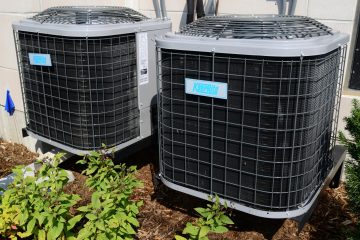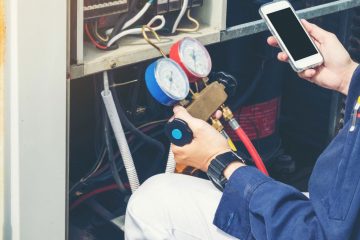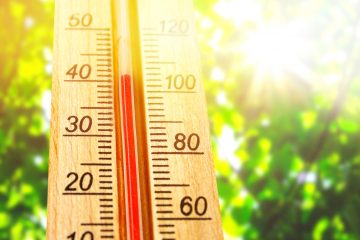Did you know ductless heating cuts your energy bill in half, and in the summer, your energy bill will be 30% less with ductless cooling? Ductless heating and cooling systems allow for different temperatures for each room in your room and are energy-efficient.
How does ductless heating and cooling work? Keep reading, and we will guide you through how the ductless heating and cooling systems work and its benefits.
When to Go Ductless
Ductless heating and air conditioning systems consist of a wall-mounted indoor unit with an outdoor compressor. These systems are less visible and audible.
You lose 25% of your energy to ductwork, so removing the ducts in these systems creates a more energy-efficient system.
Ductless heating and air conditioning have started to become more common, especially in the following situations:
- Homes that have expensive electric heat bills that also need air conditioning
- Older homes that have never had central air conditioning, so there is no ductwork
- If you build an addition onto your room, extending ductwork isn’t always feasible
- Rooms you don’t often use (you can turn off the indoor unit and save more money)
- New homes in areas where the fuel cost is high
If you aren’t sure what you’re looking for and want to look through all options, we offer a selection of central heating and cooling systems to ductless.
Even if you don’t fall into one of the situations listed above, ductless heating and cooling may be the right option for you; it depends on the structure of your home.
How Does Ductless Heating and Cooling Work?
Ductless air conditioners or “mini-split ACs” cool down your home or office the same way that central air does. They take the warm in, absorb it, and release the heat and moisture outside.
The difference between ductless and central HVAC systems is how they cool or heat the room.
A ductless air conditioner blows cold air directly into one room or area. Central air blows cold air into a system of ducts, and those ducts spread the air throughout the home or space.
Ductless ACs don’t need air ducts because their job is to only cold one room, in comparison to central air, where their job is to cool the whole house and maintain the same amount of air temperature throughout.
There are three main parts to ductless AC units:
- Blower/Evaporator Unit: This is the indoor unit that goes on the wall of the room that it needs to heat or cool. The groups are small, thin, and usually 3′ long. The unit absorbs the heat and releases it outside and blows cold air into the room.
- Conduit: The conduit connects the indoor unit to the outside unit. It’s a cable that has a power cable, refrigerant, and a drain. The cable is what gives both parts inside and outside electrical power and is a pathway for heat and moisture to leave your home.
- Condenser: The outside unit that receives all the heat from your home and then releases it into the outside air.
The reason the units are so energy efficient is that they’re only working to heat or cool one room when central heat or air is working to cool your entire home at the same time.
A ductless heat pump works the same way as the air conditioner, the valve inside the cable allows for the refrigerant to flow in both directions so that you can heat and cool from one system.
You can get as many units as you need, and you can also turn off units if you don’t use individual rooms in your house often or if they are already cool or warm and don’t need the extra temperature boost.
Mini-Split vs. Multi-Split
Ductless heating and air systems are in single or multiple zone configurations. The mini-split and multi-split come into play as options here.
Mini-split contains a single indoor fan coil and the outdoor condenser. This pair is useful for cooling one room that has a limited load space. One indoor unit per outdoor unit allows for separate temperature control for each unit, so if one stops working, the rest will still work, and the other areas will remain cool and unaffected.
Multi-split has one outdoor condenser that connects to multiple indoor units. In this scenario, one indoor unit has a thermostat, and when you need everything to be cool, you set the one unit, and all of them activate together.
This is a very cost-effective method, but should only be used in buildings where you want the temperature to be the same across the board.
Energy Saver
There are many reasons to buy a ductless heating and cooling system, cutting down your energy bill is a major one.
A few others include:
- Go Green: Ductless units are suitable for the environment because they reduce the work the HVAC system needs to do, which reduces energy expenditure, which is excellent for the environment.
- Quick Installation: Units can be installed on a room-by-room basis, and to put up the units, you need a 3-inch hole, which is very easy and leaves a minimal mark.
- Improve Air Quality: Traditional HVAC systems don’t prevent pollution from the outside coming into your home. Ductless mini-split units have a filter system that keeps out airborne particles.
Get Your Ductless System Today
Now that you can answer the question “how does ductless heating and cooling work?”, you can decide if it’s the right fit for your home.
Ductless heating and air conditioning systems are energy and cost-effective.
These systems are great for the environment and are easy to set up with minimal work done on your home.
Start deciding where to put your ductless units or contact us today with questions about what HVAC system is best for your home!


